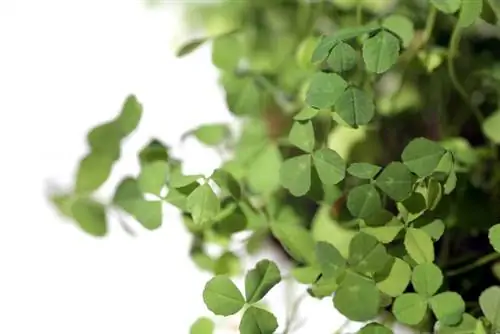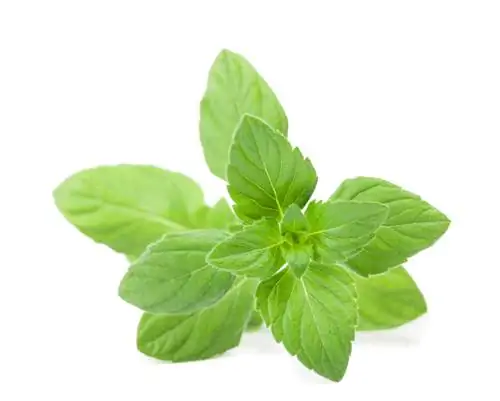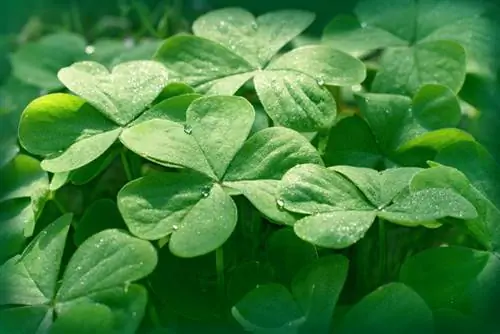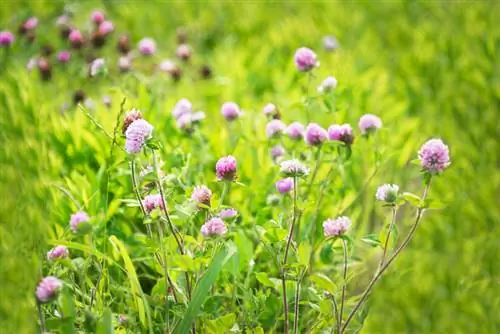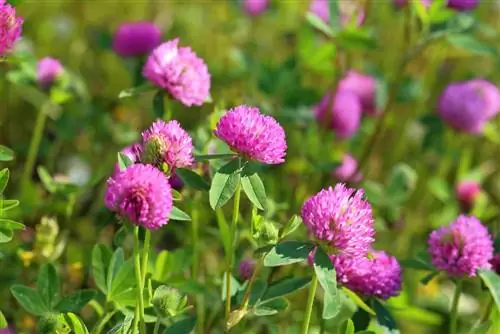- Author admin [email protected].
- Public 2023-12-16 16:46.
- Last modified 2025-01-23 11:20.
The genus clover (Trifolium) is a legume or legume. These plants are generally relatively easy to propagate as long as the conditions in the chosen growing location are right.
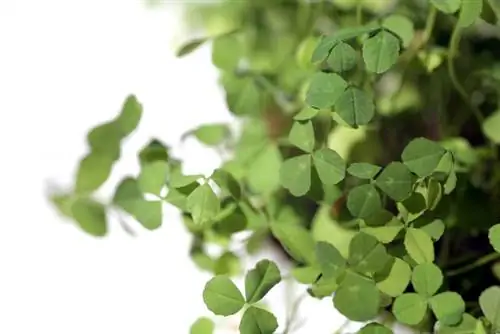
How to propagate clover?
Clover can be propagated by sowing seeds or vegetative propagation. When sowing, the best time is from March to May or August. Vegetative propagation occurs in red clover through underground runners and in white clover through above-ground creeping shoots.
Propagation by sowing
With meadow clover or red clover (Trifolium pratense), the hard-shelled seeds usually remain viable for up to ten years and under certain conditions even more than 100 years. In nature and in forage meadows with mixed grass and clover, red clover seeds are also spread by grass eaters, earthworms and ants. Since spontaneous self-pollination does not generally occur with clover, pollination by bumblebees is important for a high seed yield. The best time to sow red and white clover would be from March to May or even in August. The soil should be as level as possible when sowing, and the sowing depth should be a maximum of 1 to 2 cm.
Vegetative propagation
The red clover or meadow clover extends its up to 2 m long roots deep into the ground, which is why it is a particularly valued green manure and loosens up compacted soil. Since red clover forms underground runners, it reproduces itself in a vegetative manner. Offshoots can also be obtained simply by picking out individual specimens from the bed. With white clover, vegetative reproduction also takes place, but this takes place above the ground: with white clover, creeping shoots grow to the sides and form new roots at their support points. Since the newly rooted shoots are significantly stronger than young plants from seeds, the hard-wearing white clover can also be used as a lawn replacement. Generally, these types of clovers are:
- perennial
- fast growing
- cultivable in most soils (except peat and sand)
Easily propagate lucky clover yourself
If you received lucky clover as a gift on New Year's Eve, you can first cultivate it in a pot in the house and then set it up on the terrace or in the garden in the spring. Lucky clover is relatively easy to propagate by dividing the plant. However, you have to bring the lucky clover back into your home in good time in the fall, as the lucky clover, which belongs to the genus Oxalis, is not completely hardy, unlike many types of Trifolium clover.
Tip
If the clover specifically grown in your garden bed has not yet reached the desired growth density, then you should check the growing conditions at the location or perhaps simply resow with some clover seeds.

